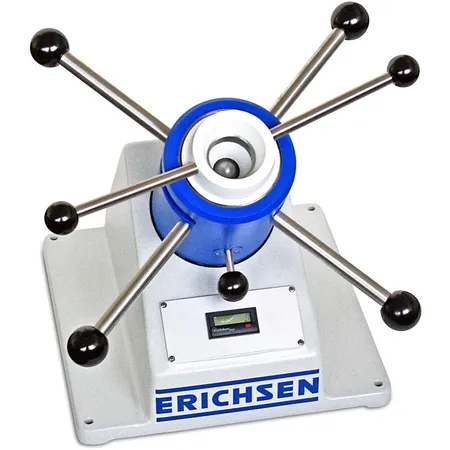The Erichsen Model 100 Sheet Metal Testing Machine is designed for manual operation and comes with a robust drawing force of 30 kN and a standard blankholder force of 10 kN. This equipment is tailored for measuring the drawing qualities of both ferrous and non-ferrous metals using the ERICHSEN CUPPING TEST. It’s ideal for materials ranging from 0.1 to 1.5 mm in thickness at 400 N/mm² tensile strength, including foil materials as thin as 0.005 mm.
Due to its ease of use, the Model 100 is particularly suitable for factories with limited sheet metal forming requirements, including work with thinner materials. This testing machine simplifies the measurement process of sheet metal’s drawing quality, allowing for the identification of the most cost-effective materials suitable for specific drawn workpieces. As such, it becomes an invaluable tool for purchasing departments as part of their order specifications.
The ERICHSEN Cupping Test not only facilitates material quality assessment but also highlights the material’s surface grain size on the bulge’s tip, produced during the test. Designed for ease of operation, the Model 100 does not require specialized skills and can be used by anyone following brief instruction.
Constructed with a durable cast iron body and a cylindrical test head, the testing machine ensures precision and reliability. It features a digital counter for displaying cupping test values and allows for easy observation of the forming process and crack appearance.

